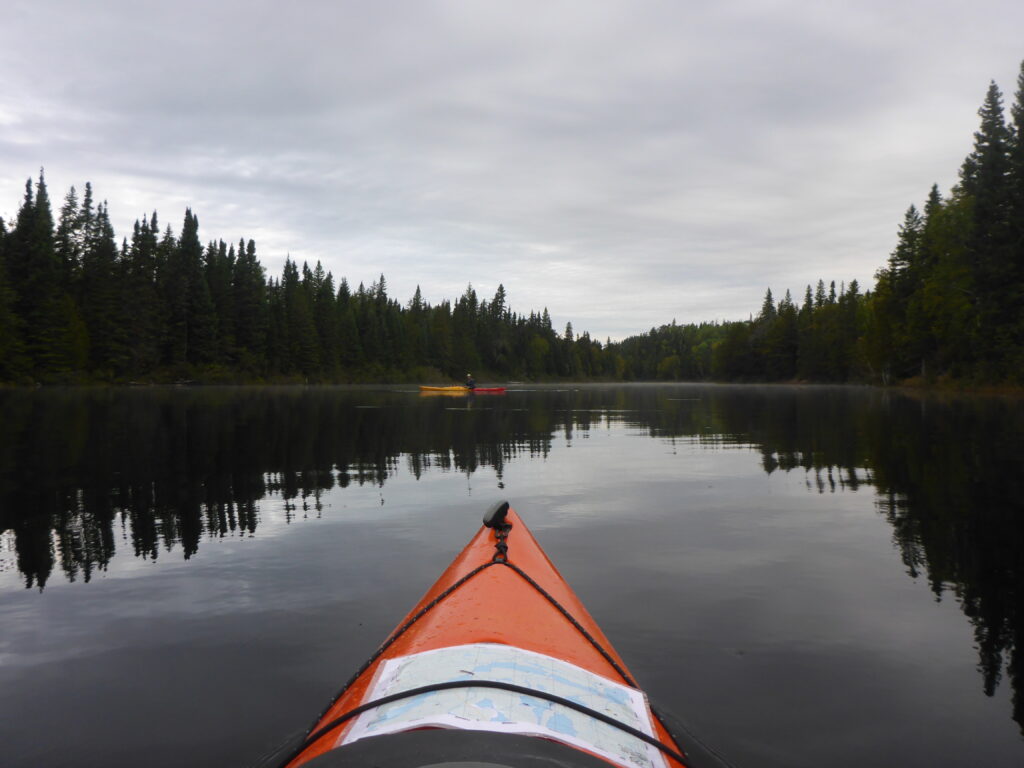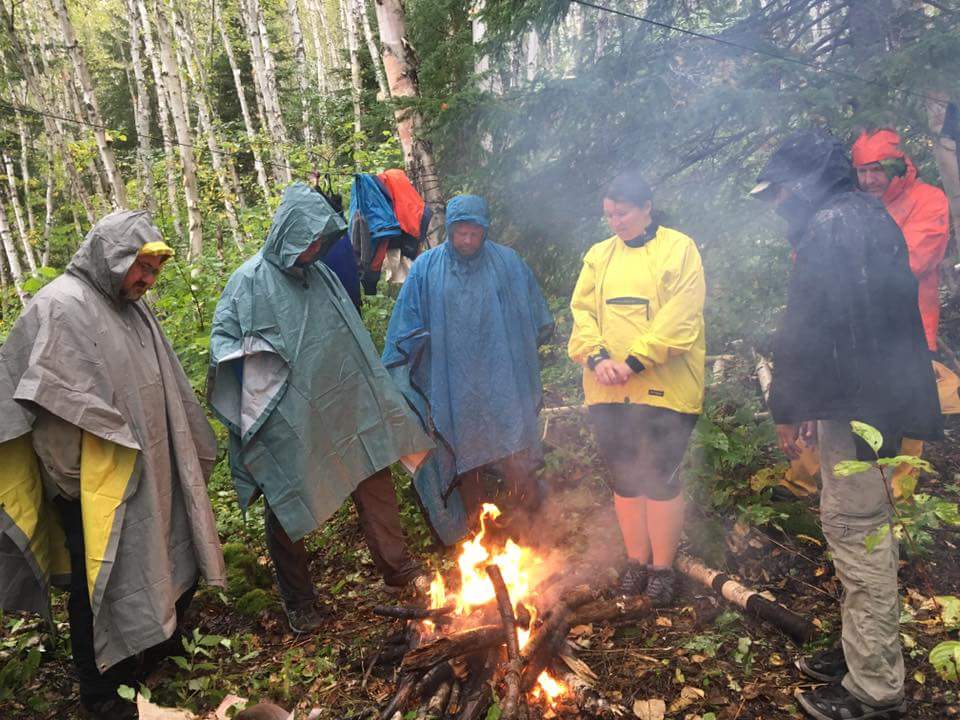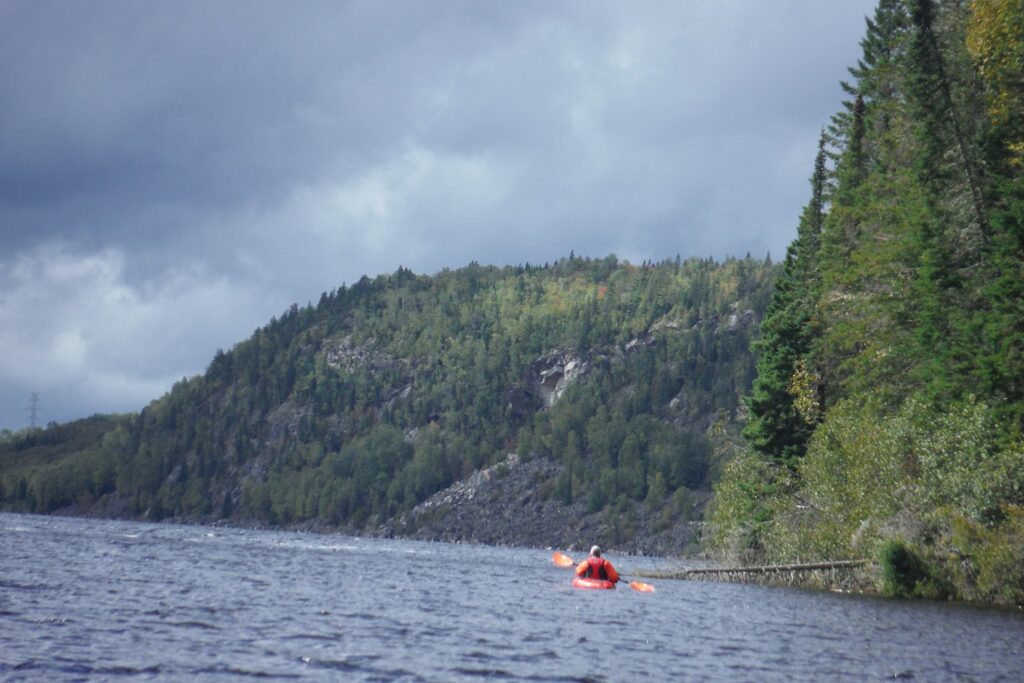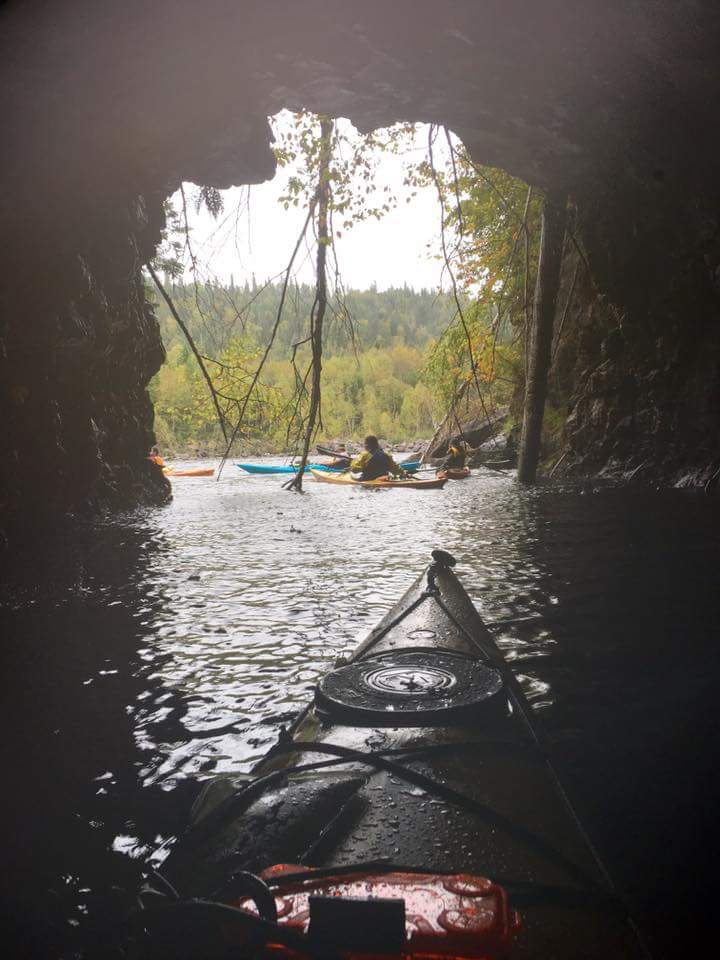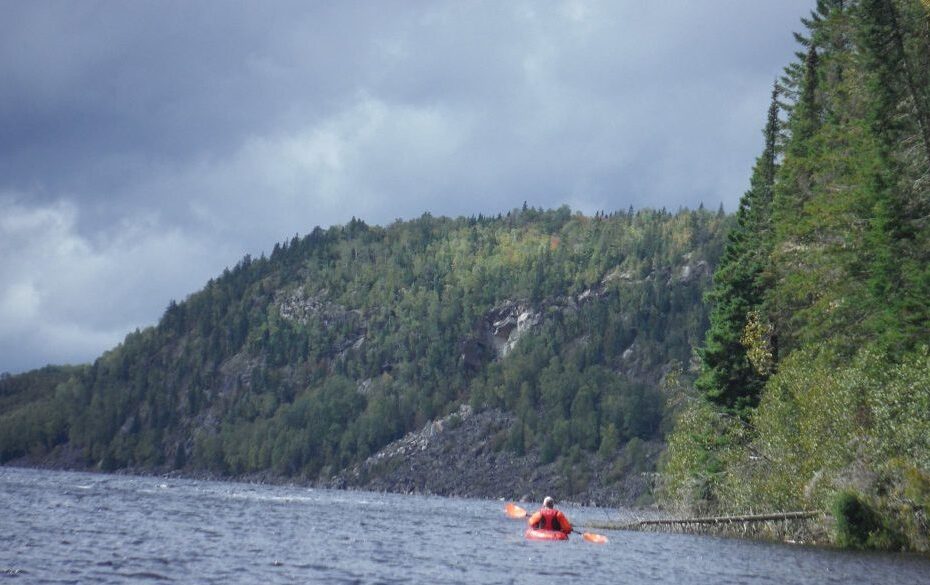Abstract
The purpose of this expedition was to kayak to Thunder Mountain on the Michipicoten River in Ontario, Canada. Once there, the team was to climb, rappel, and explore the mountain. The expedition would test the resilience and teamwork of expedition members through a series of experiments.
Hypothesis 1 – Thunder Mountain is reachable by kayak, and the rock is climbable under the right weather conditions.
Hypothesis 2 – The team is so amazing that they laugh in the face of adversity.
Method
The expedition was to be conducted over a period of 5 days with a rendezvous on 9/23/16 and departure on 9/27/16. It would consist of more than 50 miles of kayaking, under various conditions, over the course of 4 days. During the expedition, 1 day would be designated for climbing at Thunder Mountain.
Members were exposed to a variety of challenges including rapids, portages, head winds, and consecutive days of rain. Multiple experiments were conducted using both man-made and natural features within the environment.
Results
Nicholson Dam Experiment:
Three kayakers practiced kayaking across the Shikwamkwa River, immediately above a set of rapids to see how many times they could cross without being pulled in by the current. The rapids were formed by the remains of an old dam. It took 5 passes above the rapids before an unsuspecting kayaker was pulled in sideways and pinned against some pylons.

Once the kayak was lodged against the pylons, the cockpit filled completely with water making it extremely heavy. It took AR approximately 45 minutes to dislodge the kayak, and “she wasn’t even mad about it”.
The “We don’t need to portage at the island” Experiment:
This was conducted when 9 kayakers encountered class 3 rapids to the left of an island on the Shikwamkwa River. The island is located approximately 1.3 kilometers upstream from Jane Falls. There were 5 kayakers who immediately attempted to go through the rapids. Only 1 successfully made it the entire distance without tipping over, while the other 4 pitchpoled. The remaining 4 kayakers determined that there was a 4:1 probability that they would also pitchpole, so they decided to improve their odds by portaging around the rapids.
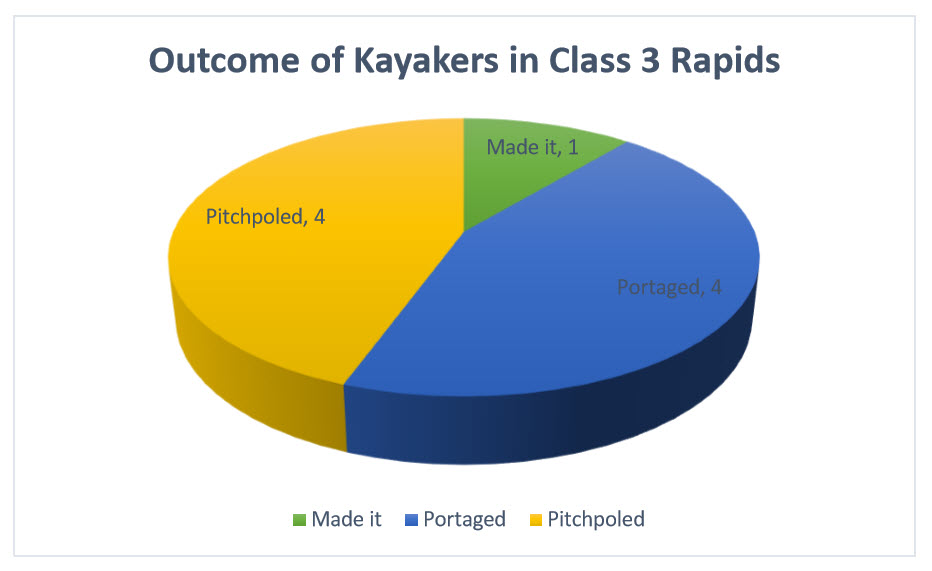
Thunder Mountain:
It took 3 days to reach Thunder Mountain by kayak. A route on the west side of the mountain was noted for a possible scramble to the top of the mountain, but further exploration was thwarted due to heavy rains that made the rock very slippery. Future exploration of the mountain is recommended.
Other Observations:
The jovial mood of expeditioners was directly proportional to the rate of the river current, but inversely proportional to the strength of headwinds. The top speed recorded without paddling was 9mph.
Teamwork notably increased along with the number of portages. By the 5th portage the number of 2-person kayak drags and hauling assists increased significantly when compared to earlier portages.
Conclusion
This expedition team clearly thrived on adversity. As things became more difficult, the entire team banded together to make it through every challenge that they faced. When one expeditioner capsized, 3 others came to his rescue. If they encountered a road block, they found a way to adapt. Pain and discomfort brought out everyone’s sense of humor, and it only added to the fun.
<End of Report>





